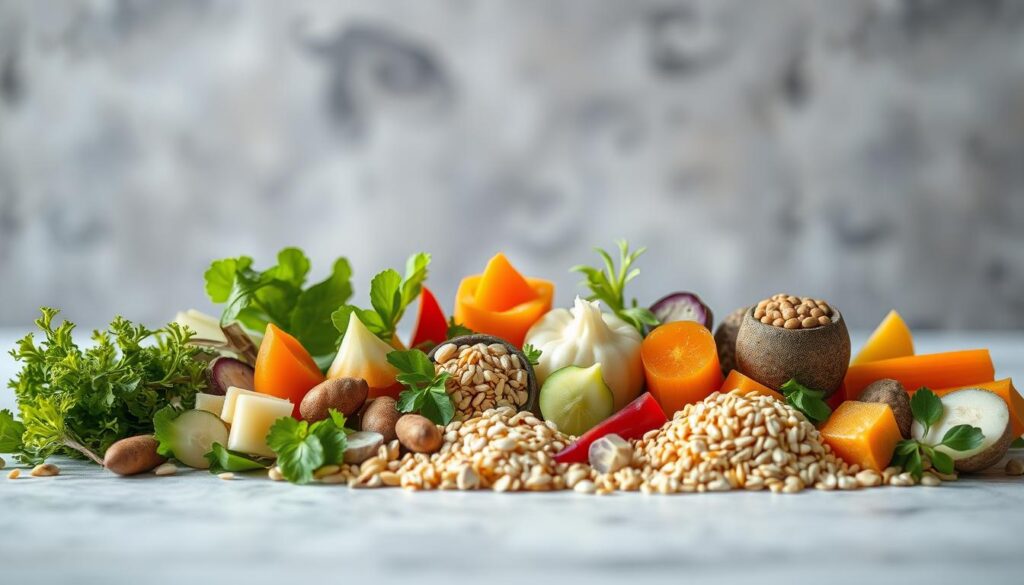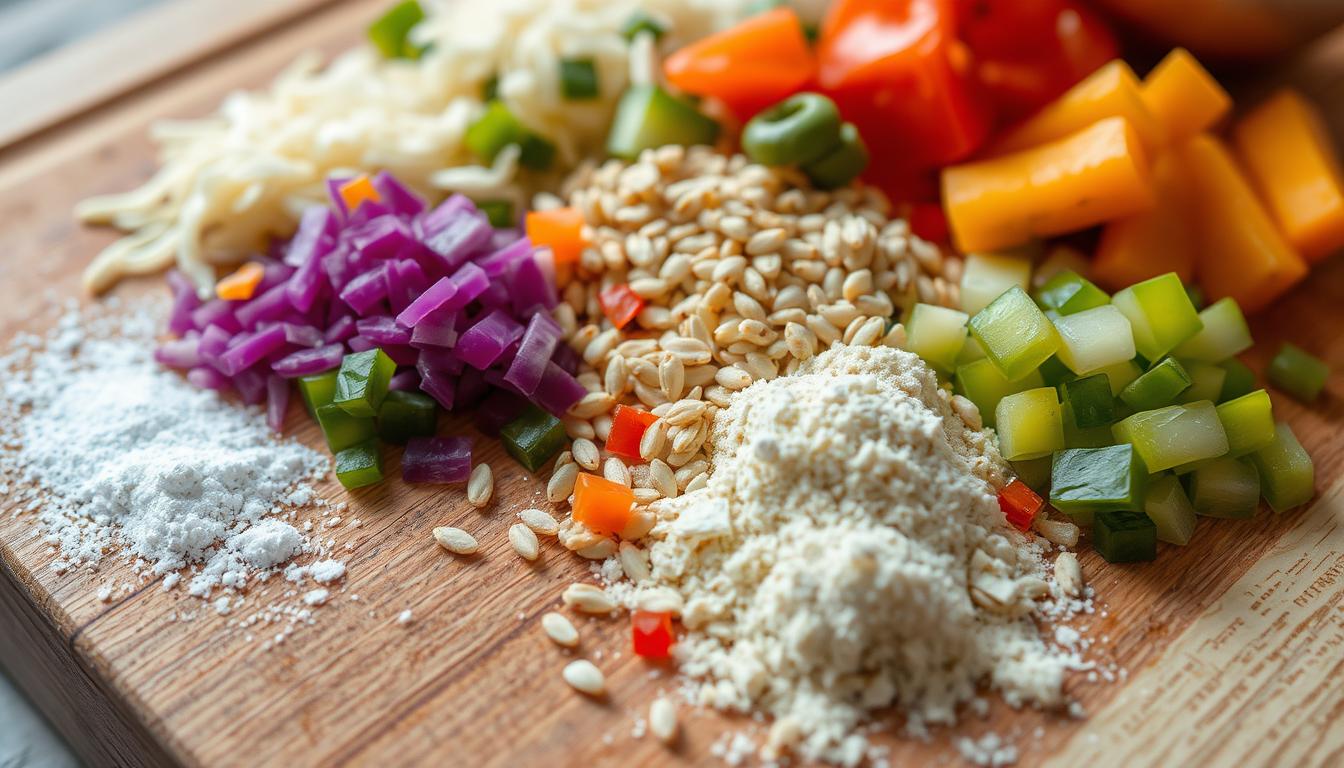Homemade Fish Food Recipe: Easy DIY Aquarium Meals
“In the world of aquarium care, nutrition is the cornerstone of vibrant aquatic life,” said Jacques Cousteau, the renowned marine explorer. Creating a perfect homemade fish food recipe isn’t just about feeding your fish—it’s about nurturing their health and vitality.
As an experienced aquarist, I’ve discovered that crafting a custom aquarium fish diet can transform your underwater ecosystem. My journey into homemade fish food began with a simple desire to provide the most nutritious meals possible for my aquatic companions.
Developing a fish food recipe requires understanding your fish’s specific nutritional needs. Every species has unique dietary requirements, and commercial foods don’t always meet these precise needs. By preparing homemade fish food, you gain complete control over ingredients and nutrition.
Key Takeaways
- Homemade fish food offers personalized nutrition
- Cost-effective alternative to commercial feeds
- Complete control over ingredient quality
- Tailored to specific fish species’ needs
- Promotes healthier and more vibrant aquarium life
Understanding the Basics of Aquarium Fish Nutrition
Making the right fish flakes recipe begins with knowing what fish need to eat. Good nutrition is key for healthy fish and their long life. My research into fish feeding has taught me a lot about making balanced meals for them.

When making fish pellets, there are a few important nutrients to think about:
- Protein: It’s vital for muscle growth and development.
- Lipids: They give energy and help cells work right.
- Vitamins and minerals: They boost the immune system and help with metabolism.
- Carbohydrates: They give energy and help with digestion.
Essential Nutrients for Healthy Fish Growth
Different fish need different foods. Marine and freshwater fish have different dietary needs that affect their health and growth. For most fish, high-quality protein from fish meal, shrimp, and squid is best.
| Nutrient Category | Primary Function | Recommended Percentage |
|---|---|---|
| Protein | Muscle Growth | 35-50% |
| Lipids | Energy Storage | 10-20% |
| Carbohydrates | Energy Source | 10-15% |
Benefits of Homemade vs. Commercial Fish Food
Homemade fish food lets you control what goes into it. Commercial foods may have fillers and preservatives. Making your own food means you can tailor it to your fish’s needs.
Common Nutritional Requirements for Different Fish Species
Tropical fish need more protein, while bottom-dwellers prefer plant-based foods. Knowing these needs helps you make the best food for your fish.
Fish Food Recipe: Step-by-Step Preparation Guide
Making your own fish food at home is rewarding for fish lovers. I’ll show you how to make a homemade fish food recipe. It’s packed with essential nutrients for your aquarium fish.

Making live fish food needs careful planning and the right ingredients. The right approach can make your fish’s diet better and keep them healthy.
Required Ingredients and Equipment
To make your custom fish food, you’ll need:
- Fresh fish or shrimp (protein source)
- Spirulina powder
- Vitamin supplements
- Gelatin (as a binding agent)
You’ll also need:
- Food processor
- Mixing bowls
- Measuring cups
- Plastic wrap
- Freezer-safe containers
Mixing and Processing Instructions
Here’s how to make the perfect aquatic pet meal:
- Blend protein sources thoroughly
- Mix in spirulina and vitamin supplements
- Add gelatin to create a consistent mixture
- Process until smooth and well-combined
Storage and Preservation Methods
Storing your homemade fish food right is key. Freeze the prepared mixture in thin sheets or small portions to keep it fresh and nutritious.
For the best results, store your live fish food in airtight containers. Use it within 2-3 months. Thaw small portions as needed to keep your fish well-nourished.
Alternative Ingredients for Custom Fish Food Blends
Creating custom fish food blends is all about understanding the nutritional needs of different fish. I’ve learned that being versatile is crucial in making healthy fish recipes.
Exploring different ingredients for aquarium nutrition has been enlightening. I’ve found several alternatives that can greatly improve your homemade fish food:
- Protein Sources
- Shrimp meal
- Insect larvae
- Krill
- Fish protein concentrate
- Plant-Based Ingredients
- Spirulina
- Chlorella
- Dried seaweed
- Vegetable matter
Different fish need different nutrients. Carnivorous fish do well with protein-rich foods. Herbivorous fish need more plants. Omnivorous fish do best with a mix of both.
When making your fish food recipe, remember these important points:
- Protein content percentage
- Vitamin and mineral balance
- Digestibility of ingredients
- Fish species-specific requirements
By trying out these ingredients, you can make custom fish food blends. These blends will help your fish stay healthy and grow well.
Tips for Proper Fish Food Portions and Feeding Schedule
Making the perfect diy fish food recipe is more than just mixing ingredients. It’s about the right amount and how you feed them. Knowing how to feed your fish right keeps your aquarium healthy and your fish happy.
Feeding fish isn’t the same for all. Each type needs different food at different times in their life.
Signs of Overfeeding and Underfeeding
Finding the right balance in your fish food is crucial. Look out for these signs:
- Overfeeding signs:
- Food left uneaten at the bottom
- Cloudy water
- More algae
- Underfeeding signs:
- Visible weight loss
- Less active
- Pale color
Seasonal Feeding Adjustments
Your fish food recipe needs to change with the seasons. Fish eat differently with the weather:
| Season | Feeding Recommendation |
|---|---|
| Summer | More protein, smaller meals |
| Winter | Less often, less protein |
| Spring/Fall | Slowly change from summer to winter diet |
Special Dietary Considerations
Some fish need special food. My chicken recipe won’t fit all. Breeding fish, young fish, and those with health issues need special care.
“Know your fish’s specific dietary requirements to ensure optimal health and longevity.” – Aquarium Nutrition Expert
By watching portions, understanding feeding cues, and adjusting your fish food, you’ll have a healthy aquarium.
Conclusion
Making your own fish food turns aquarium care into an art. You can use recipes like seafood paella or chowder, but for fish. This way, you get food that’s better than what you buy.
We’ve seen how making your own fish food lets you control what your fish eat. You can make food that fits their special needs. This means your fish get the best food for them.
Trying out different ingredients and ways to make food is important. It helps you find the perfect recipe for your fish. Remember to feed the right amount, store food well, and know what your fish need to eat.
Learning to make your own fish food saves money and shows you care about your fish’s health. Your effort to make healthy, special meals will make your fish happier and healthier.

